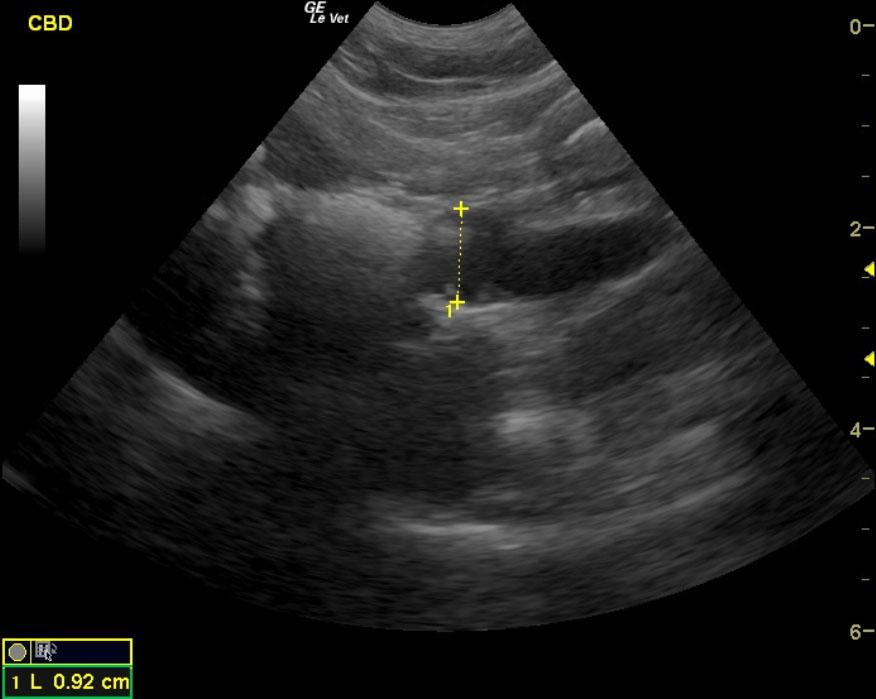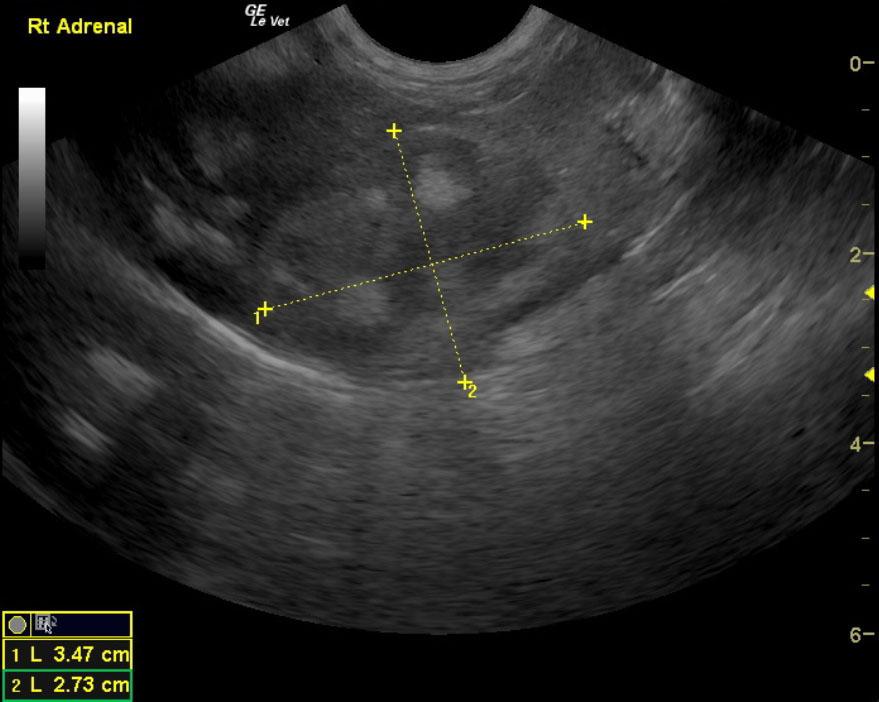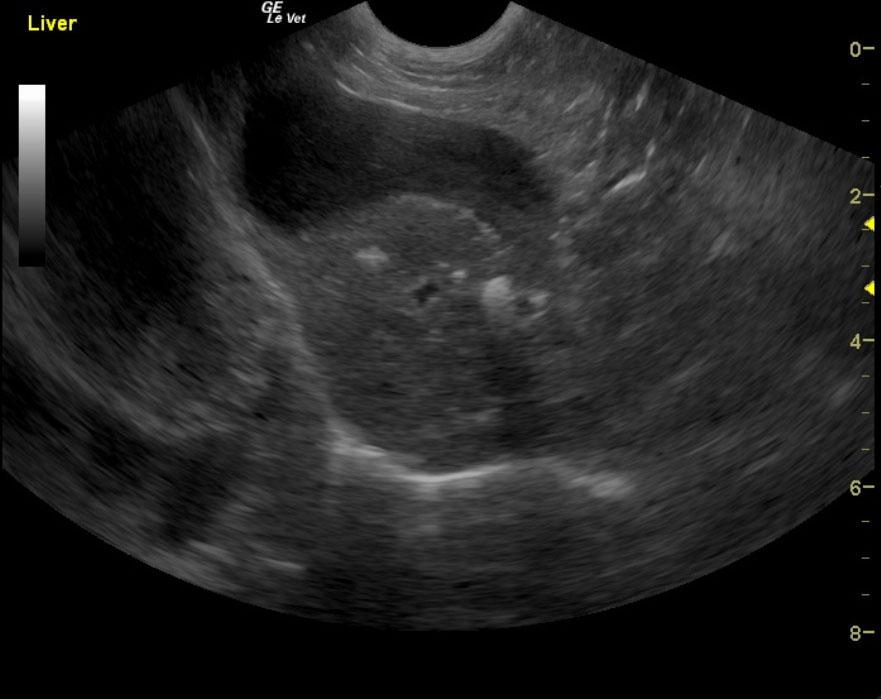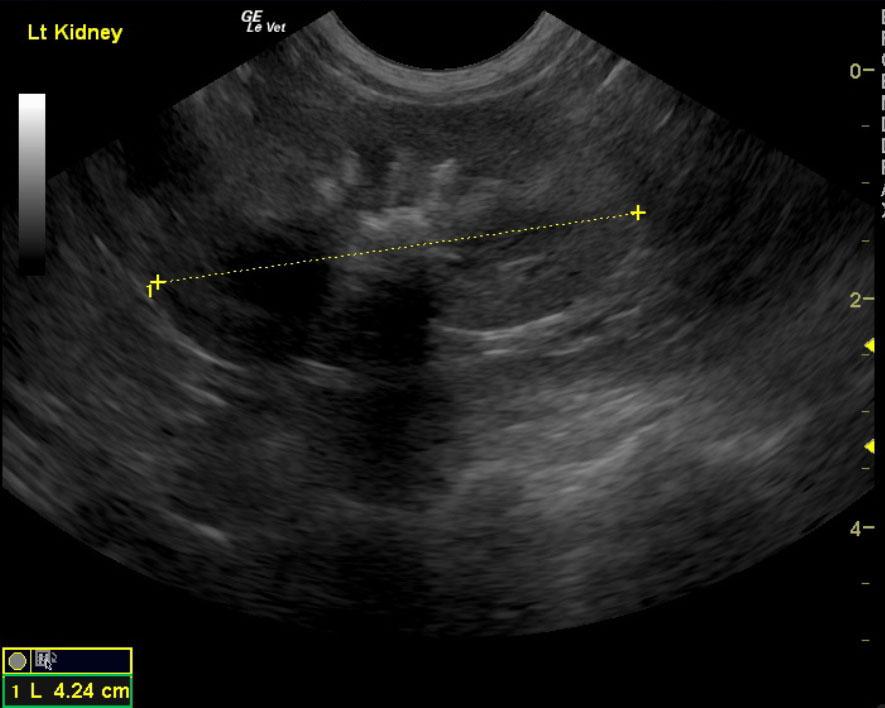A 12-year-old FS Yorkshire terrier dog was presented for sudden onset aggression. Two years previously, calcium oxalate uroliths had been removed via cystotomy. The dog was on Hill’s U/D and enacard. An inappropriate specific gravity, 3+ protein, hematuria, and elevated urine protein: creatinine ratio was present on urinalysis. CBC was within normal limits, whereas serum biochemistry showed elevated ALT and elevated ALP activity, hypercalcaemia, and elevated lipase. T4 was low.
A 12-year-old FS Yorkshire terrier dog was presented for sudden onset aggression. Two years previously, calcium oxalate uroliths had been removed via cystotomy. The dog was on Hill’s U/D and enacard. An inappropriate specific gravity, 3+ protein, hematuria, and elevated urine protein: creatinine ratio was present on urinalysis. CBC was within normal limits, whereas serum biochemistry showed elevated ALT and elevated ALP activity, hypercalcaemia, and elevated lipase. T4 was low.



